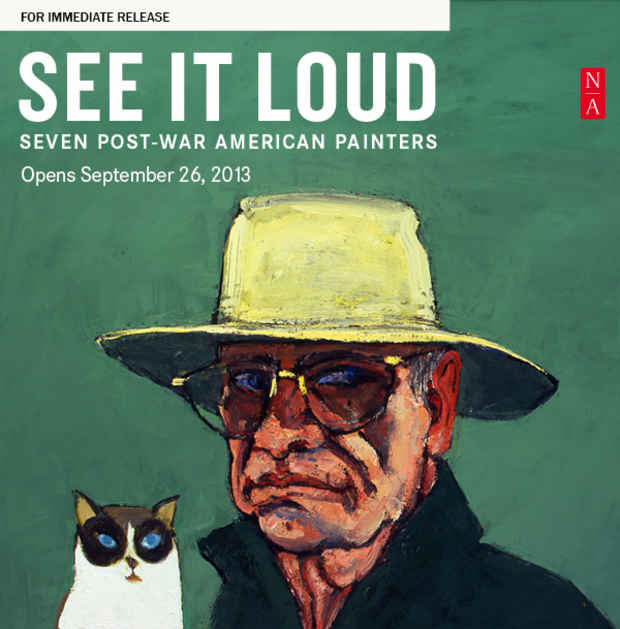“See it Loud” Exibition
National Academy

This event has ended.
In the years after World War II, a group of young New York artists known as the New York School formed the basis for Abstract Expressionism, a school of painting in America that exerted a major influence on international artists. Artists Jackson Pollock (1912–1956), Willem de Kooning (1904–1997), and Mark Rothko (1903–1970) were among the movement’s leaders. In their work, they abandoned formal composition and the representation of real objects and concentrated on instinctual arrangements of space and color. Their goal was to demonstrate the effects of the physical action of painting on the canvas.
During this time, the painters in SEE IT LOUD were beginning their careers. Their art grew out of abstract currents, but shifted toward representation. They ultimately embraced the possibilities of a dialectical synthesis between these two artistic currents at a time when abstraction and representation were polarized in the art world. “There
was very nearly a moral dimension to the opposition between the two aesthetics,” states Bruce Weber, the National Academy Museum’s Senior Curator of 19th and Early 20th Century Art and the curator of the exhibition. “American painters who came of age in the 1940s and 1950s were expected to choose an allegiance to abstraction or representation.”
Some of the artists (Paul Georges, Peter Heinemann, Neil Welliver, Paul Resika, Albert Kresch) had begun their careers as abstract painters under the instruction of Hans Hofmann (1880-1966) or Josef Albers (1888-1976). Some were influenced by the work of the Abstract Expressionists, yet felt the need to expand the resources of their art by working directly from nature or the figure. All were in direct contact with the American artists and “schools” of their own day, but they also found profound inspiration in the work of European masters such as Henri Matisse (1869-1954), Balthus (1908-2001), Jean Hélion (1904-1987), Pierre Bonnard (1867-1947), André Derain (1880-1954), and Max Beckmann (1884-1950). And many in the group looked to European masters of the more distant past, including Titian (c. 1488-1576), Canaletto (1697-1768), Jean-Baptiste Camille Corot (1796-1875), and Édouard Manet (1832-1883), to assist them in building powerful and significant styles of their own.
SEE IT LOUD is the first museum exhibition devoted to this group of post-war American painters. The show seeks to restore a sense of historical balance to the understanding of the history of American art. According to Weber, “All of the artists in this exhibition insisted on the significance of figuration and landscape painting, even when it seemed irretrievably out of fashion. All felt in some degree limited by abstraction and were, in fact, members of a larger group of American artists who wanted to go beyond abstraction.”
Media
Schedule
from September 26, 2013 to January 26, 2014